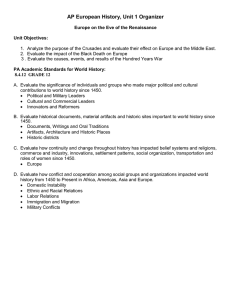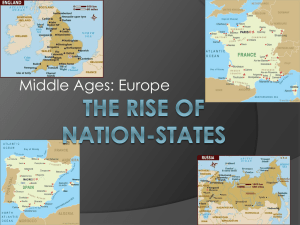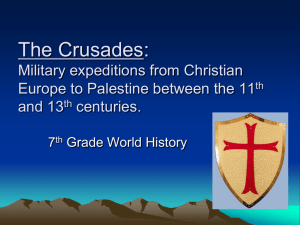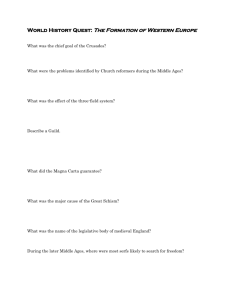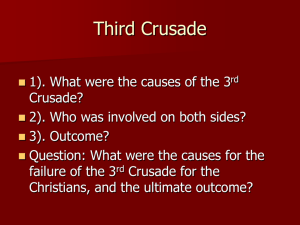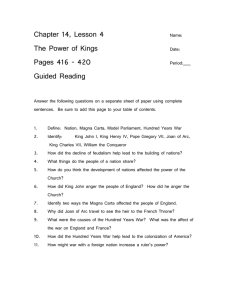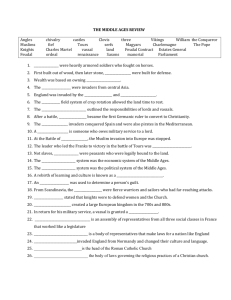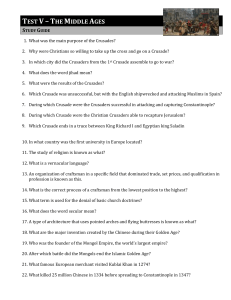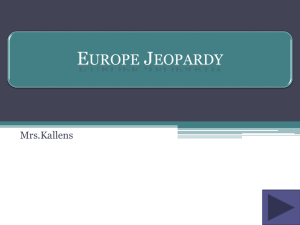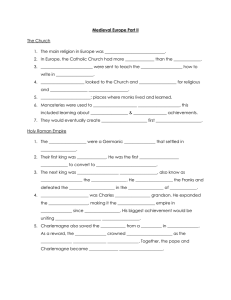Chapter 14 Study Guided with Answers…Holly
advertisement
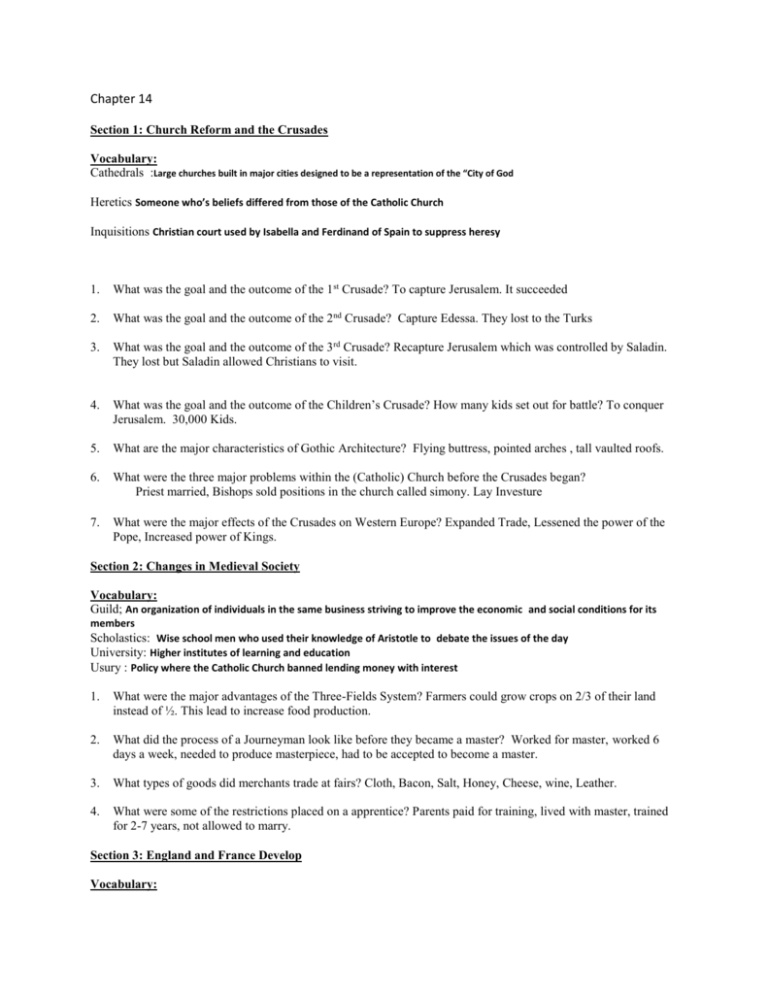
Chapter 14 Section 1: Church Reform and the Crusades Vocabulary: Cathedrals :Large churches built in major cities designed to be a representation of the “City of God Heretics Someone who’s beliefs differed from those of the Catholic Church Inquisitions Christian court used by Isabella and Ferdinand of Spain to suppress heresy 1. What was the goal and the outcome of the 1st Crusade? To capture Jerusalem. It succeeded 2. What was the goal and the outcome of the 2nd Crusade? Capture Edessa. They lost to the Turks 3. What was the goal and the outcome of the 3rd Crusade? Recapture Jerusalem which was controlled by Saladin. They lost but Saladin allowed Christians to visit. 4. What was the goal and the outcome of the Children’s Crusade? How many kids set out for battle? To conquer Jerusalem. 30,000 Kids. 5. What are the major characteristics of Gothic Architecture? Flying buttress, pointed arches , tall vaulted roofs. 6. What were the three major problems within the (Catholic) Church before the Crusades began? Priest married, Bishops sold positions in the church called simony. Lay Investure 7. What were the major effects of the Crusades on Western Europe? Expanded Trade, Lessened the power of the Pope, Increased power of Kings. Section 2: Changes in Medieval Society Vocabulary: Guild; An organization of individuals in the same business striving to improve the economic and social conditions for its members Scholastics: Wise school men who used their knowledge of Aristotle to debate the issues of the day University: Higher institutes of learning and education Usury : Policy where the Catholic Church banned lending money with interest 1. What were the major advantages of the Three-Fields System? Farmers could grow crops on 2/3 of their land instead of ½. This lead to increase food production. 2. What did the process of a Journeyman look like before they became a master? Worked for master, worked 6 days a week, needed to produce masterpiece, had to be accepted to become a master. 3. What types of goods did merchants trade at fairs? Cloth, Bacon, Salt, Honey, Cheese, wine, Leather. 4. What were some of the restrictions placed on a apprentice? Parents paid for training, lived with master, trained for 2-7 years, not allowed to marry. Section 3: England and France Develop Vocabulary: Magna Carta: “Great Document” drawn up by English nobles that guaranteed certain political rights to the people 1. What political rights were granted under the Magna Carta? No taxation without representation, Jury Trail 2. Who made up the Estates-General? Church Leaders, Commoners, Wealth Landowners, Merchants by invite. 3. What event marked the beginnings of democracy in France and England? Estates General and Hundred year War Section 4: The Hundred’s Year War and the Plague Vocabulary: Bubonic Plague A deadly epidemic (disease) during the 1300’s that killed nearly one-third of Europe: Hundreds Year War: Conflict launched by Edward III in 1337 A.D. to capture the French throne. These battles were fought off and on until 1453. 1. What were the major impacts of the Hundred’s Year War? Nationalism, War of roses in England, Power of French monarch increased. 2. What major change in warfare occurred during the Hundred’s Year War? Longbow 3. What were the major effects the Bubonic Plague had on Europe? Town Populations decrease…Look on Page 401 for more. You have to do some work on it. 4. Which historical figure was handed over to church and burned as a witch after trying to free France from England’s grip? Joan of Arc
